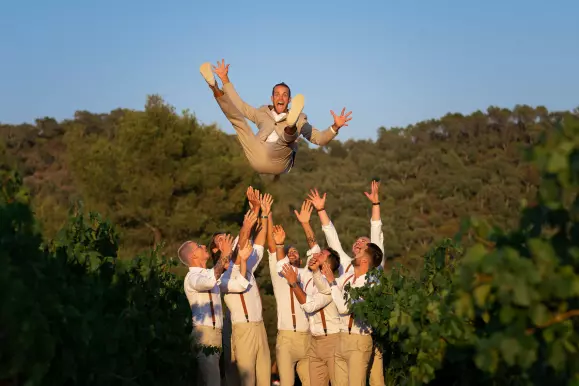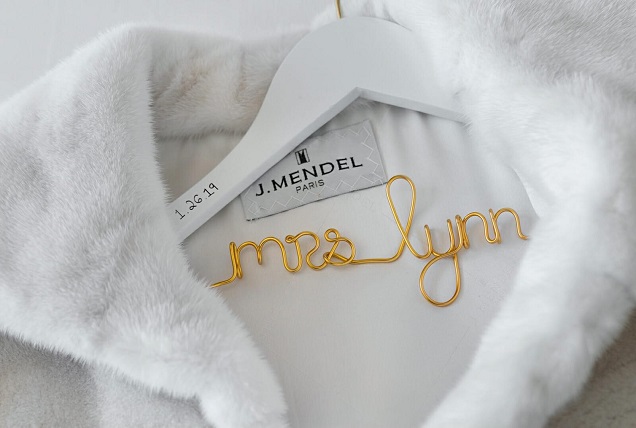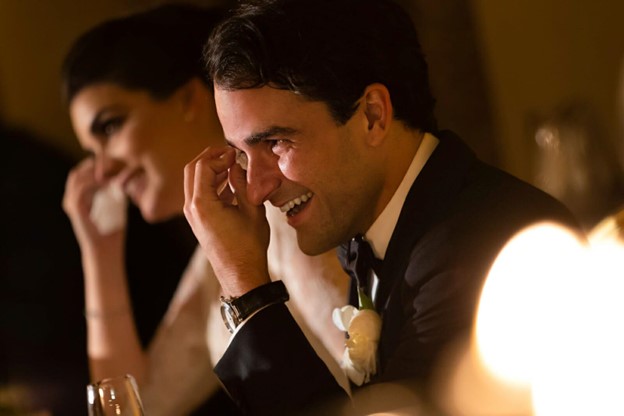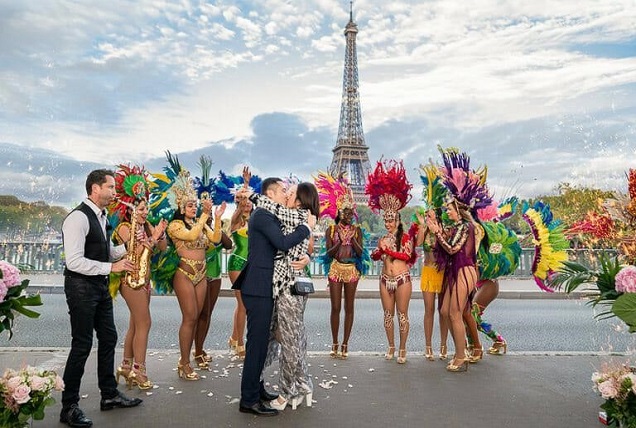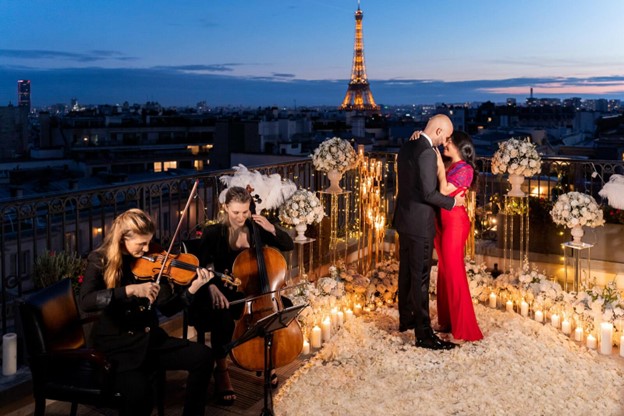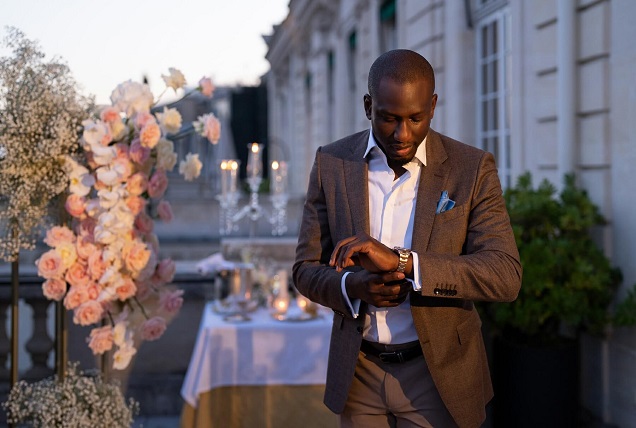French Wedding
In the contemporary French wedding landscape, age-old customs seamlessly merge with modern trends. Across urban lofts and serene vineyards, couples pay homage to France’s rich matrimonial history while incorporating current influences, from tech-savvy additions to sustainable choices. Even as personal touches and new-age practices redefine the celebrations, core traditions—like heartfelt vows, gourmet feasts, and the iconic Croquembouche—retain their revered place. Thus, even amidst evolving times, Paris weddings beautifully encapsulate the enduring romance and elegance the nation is celebrated for.
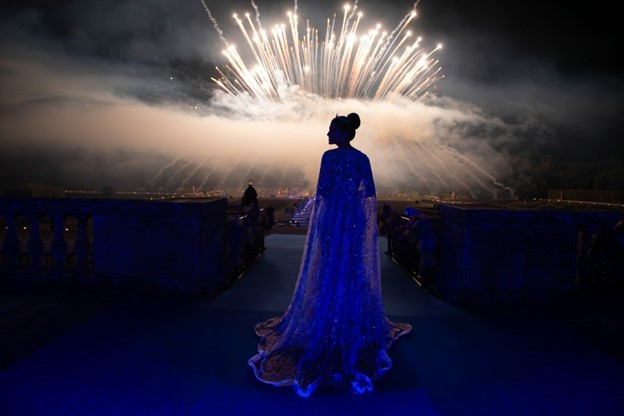
15 French Wedding Traditions
French weddings have been shaped by the country’s predominantly Roman Catholic roots, but they’ve also been influenced by regional customs and the fashion-forward nature of French culture. One distinct aspect is the mandatory civil ceremony at the town hall before any religious or other ceremonies, a tradition that’s been in place since the establishment of the Civil Code by Napoleon in 1804. Historically, practices like dowries and arranged marriages were more common, especially among the elite. However, as societal views evolved towards love-based unions, such customs faded. Today, while many traditional elements remain, French weddings often incorporate a mix of contemporary and personalized touches, reflecting both the importance of family and the individual tastes of the couple.

1. Civil Ceremony (Mariage civil)
The Civil Ceremony, known as “Mariage civil” in French, is the cornerstone of the marriage process in France. Unlike many countries where the legal and religious components can be combined, in France, the legal aspect of the marriage ceremony is distinct and separate. This emphasizes the separation of church and state, ensuring that all marriages, regardless of religious affiliation, have a standardized legal procedure.
The ceremony takes place at the town hall (Mairie), which is the administrative heart of French towns and cities. Each district or commune in France has its own Mairie, and this is where all official administrative events, like births, deaths, and marriages, are recorded. The choice to hold marriages in such a place highlights their significance not just to the couple but to the community and nation.
Attendance at the Mariage civil is typically more intimate than the subsequent religious or festive celebrations. It’s common for only close family members and chosen witnesses to be present. This ensures the solemnity of the occasion and reflects the legal gravity of the vows being exchanged.
The vows taken during the civil ceremony are formal and standardized. They’re not the personalized vows that couples might exchange during a religious or personal ceremony. Instead, they are a set script that confirms the couple’s understanding of the responsibilities and rights of marriage under French law.
Upon the conclusion of the ceremony, the newlyweds are presented with a “livret de famille.” This booklet, which translates to “family book,” serves as an official record for the family unit. It is a foundational document in the administrative life of a French family. All significant life events that affect the immediate family, such as the births of children or the unfortunate events of deaths, are subsequently recorded in this booklet. The issuance of the livret de famille at the marriage ceremony symbolizes the beginning of a new family unit within the French societal structure.
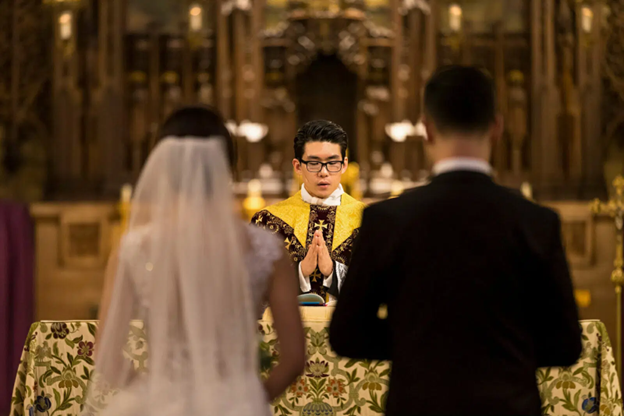
2. Religious Ceremony
In France, as in many countries, the religious ceremony is a deeply rooted tradition that offers a spiritual dimension to the union of two individuals. Although the civil ceremony at the town hall is the only legally binding marriage act in France, a significant number of couples opt for a religious blessing to further sanctify their union.
Roman Catholic Church Influence: The Roman Catholic church plays a dominant role in the religious landscape of France. Therefore, many couples choose this setting for their religious wedding. The ambiance of a historic French church, often adorned with intricate artwork and stained glass windows, offers a profound and serene backdrop for such an occasion.
Nature of the Ceremony: Couples can choose between a full mass, which involves the Eucharistic celebration and typically lasts over an hour, or a shorter ceremony that primarily focuses on blessings and matrimonial rites. The choice often depends on the couple’s personal religious convictions and the significance they attach to the church’s rituals.
Elements of the Ceremony: Traditional hymns, often sung by choirs or soloists, resonate in the church, accompanying various parts of the service. Readings, typically taken from the Bible, highlight themes of love, commitment, and partnership. These readings can be done by the priest, family members, or close friends. Central to the ceremony is the sacrament of marriage, where couples publicly declare their vows to one another.
Exchange of Wedding Bands: Unlike many cultures where the engagement ring holds prominent ceremonial value, in a traditional French Roman Catholic wedding, the focus is on the wedding bands. These bands symbolize the eternal circle of love and life. It’s customary for the couple to exchange these rings during the religious ceremony, marking their commitment and unity. The engagement rings, while significant in the pre-wedding phase, take a secondary role during this sacred occasion.
In essence, the religious ceremony, while not a legal requisite, adds layers of cultural, emotional, and spiritual depth to the wedding, making it a cherished choice for many couples.
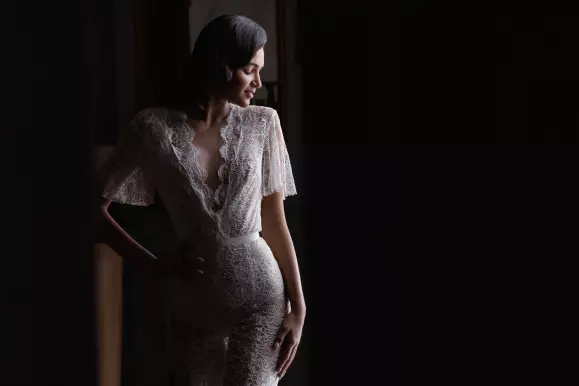
3. Dress and Attire
When we delve into the world of French wedding fashion, the bridal gown stands out as a testament to France’s reputation for high-end fashion and artistry. These gowns encapsulate the essence of French elegance. Detailed lacework, a prominent feature in many French bridal dresses, showcases the country’s long-standing legacy of craftsmanship in the world of textiles. The precision and art involved in this intricate lacework reflect both tradition and a touch of luxury, often making these dresses heirloom pieces.
As for the groom, his attire isn’t merely an afterthought. The emphasis on tailored precision ensures he looks every bit as refined as his bride. Whether he opts for a suit or a tuxedo largely depends on the wedding’s formality level, but it’s always chosen to resonate harmoniously with the bride’s gown, ensuring the couple presents a unified, complementary appearance.
The boutonniere, traditionally worn on the groom’s lapel, is a small floral arrangement. Not only does it serve as a decorative accessory, but it also ties in the groom’s attire with the overall wedding aesthetic, often matching the bride’s bouquet or the central floral theme of the wedding. The act of wearing a boutonniere is a nod to timeless fashion, adding a touch of sophistication and traditional charm to the groom’s ensemble.
4. La Noce
“La Noce” is a vibrant and traditional component of French weddings that harks back to the bygone era of close-knit village communities. The term “La Noce” can be translated to “the wedding” or “the wedding party,” but in this context, it describes the spirited parade that takes place on the wedding day. At its core, this procession aims to symbolize the journey of the bride from her single life at her family’s home to her new life as a married woman.
Imagine the scene: The streets are alive with the melodious sounds of local musicians playing traditional French tunes. Family members, close friends, and even some enthusiastic villagers join in this parade, each adding to the revelry with instruments, clapping, singing, and even the occasional light-hearted jest. The bride, often at the center of this jubilant procession, is escorted amidst this cacophony of joy, making her way to the place where she’ll say her vows.
While the origins of “La Noce” are rooted in older customs when villages were smaller and everyone knew each other, its essence remains the same in modern adaptations—celebrating love and unity in the most communal and public manner. Even today, in some regions or families that cherish traditional practices, you might witness this heartwarming spectacle, a testament to the enduring nature of cultural traditions and the universal joy of celebrating love.
5. Vin d’honneur
The “vin d’honneur” is a significant aspect of French wedding celebrations and can be likened to a cocktail hour that one might find in weddings of other cultures. Its name, which translates to “wine of honor,” aptly conveys its primary essence: a celebratory drink in honor of the newlyweds. This event typically takes place after the wedding ceremony and before the main reception dinner.
While drinks are certainly a focal point, with guests often served a selection of fine wines, champagnes, and possibly hors d’oeuvres, the primary purpose of the “vin d’honneur” is social. It’s an inclusive moment, designed to ensure that all guests, even those who may not be present at the more intimate reception dinner, have an opportunity to toast the couple, offer their congratulations, and share in the joy of the occasion.
In some ways, the “vin d’honneur” acknowledges the varying closeness of relationships in a large gathering. By separating this event from the main reception, it allows for a wider celebration where everyone can feel involved without the commitment or expectation of attending the entire evening’s events. It’s a gracious way for the couple to share their joy with a broader circle, ensuring that no one feels left out of the significant moment in their lives.
6. Traditional Wedding Dishes
French weddings are renowned for their culinary delights, and the menus often reflect the rich gastronomic heritage of the nation. Depending on the region, couples may offer dishes that are particular to that area, ensuring guests get a taste of local delicacies. French cuisine, known globally for its finesse and flavors, is presented in multiple courses during the wedding feast. This can include a variety of starters, main courses, cheeses, and desserts.
Central to the French wedding feast is the cheese selection, which often includes both internationally acclaimed and locally cherished varieties. Paired with these cheeses, one can expect an assortment of French wines, curated to complement the flavors of the dishes served. Each wine, whether it be a crisp white from the Loire Valley, a robust red from Bordeaux, or a bubbly champagne from its namesake region, plays a role in enhancing the dining experience.
The pièce de résistance of the wedding meal, however, is undoubtedly the Croquembouche. This traditional dessert is both a visual and gastronomic spectacle. It consists of small choux pastries that are filled with cream and then meticulously assembled into a towering cone shape. To hold the structure together and give it a gleaming, golden finish, chefs drizzle and bind the pastries with spun caramel. Cutting into the Croquembouche is a cherished moment, symbolizing the sweet journey the newlyweds are about to embark upon.
7. Champagne Tower
The Champagne Tower is one of the quintessential elements seen in many festive celebrations, especially in luxurious French weddings. At its core, it represents both spectacle and tradition. Visually, the tower is a marvel. It consists of numerous champagne flutes meticulously positioned in the form of a pyramid. The design isn’t just for aesthetics; it serves a functional purpose. When champagne is poured into the glasses at the pyramid’s pinnacle, it overflows, trickling down to fill the glasses below in a controlled and mesmerizing cascade.
This overflowing method symbolizes more than just the act of filling glasses. It stands for prosperity, abundance, and the overflow of blessings. In the context of a wedding, it represents the overflowing joy of the newlyweds, suggesting that their life together will be filled with plentiful happiness, success, and shared moments of celebration. The act of pouring champagne in such a communal setting also emphasizes unity and togetherness, suggesting that the happiness of one is shared and multiplied among many. Thus, beyond its visual appeal, the Champagne Tower is deeply emblematic of collective celebration, shared joy, and a hopeful, prosperous future.
8. Trousseau
The term “trousseau” originates from the French word “trousse,” meaning a small bundle. Historically, the trousseau referred to a collection of personal and household items that a bride would accumulate in anticipation of her marriage. Unlike a dowry, which could include money, land, or other forms of wealth and was typically given to the groom or his family, the trousseau was exclusively for the bride and her new home.
The tradition was symbolic of a bride’s preparation for her role as a homemaker and was a showcase of her domestic skills and her family’s affection for her. Central to this collection were items that were not just utilitarian but also artistic. Families took immense pride in contributing handcrafted linens, often painstakingly embroidered by the women in the family, signaling their wishes for the couple’s prosperous life ahead.
Beyond linens, the trousseau could also contain hand-sewn clothing, jewelry, lace, and other decorative items for the marital home. Over time, as society modernized and the significance of dowries and such traditions reduced, the concept of the trousseau transformed. While it may not hold the same traditional weight today, the essence of the trousseau can still be found in bridal showers or wedding gifts that focus on preparing the bride for her new life.
9. La Soupe
La Soupe is a quirky and light-hearted tradition, mostly observed in the northern parts of France. This ritual takes place after the main wedding festivities have concluded. The essence of the tradition lies in its humorous undertone, intended to add an element of fun and to test the couple’s mettle.
The ceremony’s main highlight is a concoction that is ceremoniously presented to the newlyweds. This isn’t any ordinary beverage. It’s usually a blend of various leftover alcoholic drinks from the wedding party, symbolizing the mixed emotions and experiences the couple might encounter in their marital journey. The choice of serving dish is what adds the comic element: a toilet bowl. While the imagery might seem unsavory to some, in context, it’s intended to be humorous and symbolic of the unexpected surprises life might throw at a couple.
But this isn’t just a prank for the sake of laughter. Serving this concoction is believed to give the newlyweds the strength and stamina they might need before their wedding night. It’s a playful nod to the physical intimacy that traditionally follows the wedding ceremony.
In essence, while La Soupe might seem unusual to outsiders, for those familiar with the tradition, it represents the importance of humor, resilience, and unity in the face of life’s unpredictable moments in a marital journey.
10. Les Rubans
The tradition of “Les Rubans” holds a poignant place in French wedding ceremonies. As its name suggests, it revolves around the use of ribbons, which are stretched across the path the couple treads as they exit the ceremony. These ribbons, often held by guests or young children, represent the various obstacles and challenges that a couple might encounter throughout their marital journey.
The act of cutting these ribbons is rich in symbolism. As the couple approaches each ribbon, they must pause and cut it together before proceeding. This act underscores the importance of teamwork and unity in addressing life’s challenges. It is a visual representation of the vow they’ve just taken to stand by each other’s side, no matter the difficulties they may face. The cutting signifies the couple’s mutual commitment to confront hardships head-on and their shared determination to overcome them.
Moreover, by incorporating guests or children in the process, the tradition subtly underscores the role of community and loved ones in a couple’s life. It suggests that while challenges are inevitable, with love, cooperation, and a supportive community, they can be surmounted. In essence, “Les Rubans” is not just a ceremonial gesture; it’s a profound testament to the enduring spirit of marital unity and perseverance.
11. Throwing Grains
At the heart of many wedding traditions worldwide lies the act of throwing grains, a custom with deep-rooted historical significance. In French nuptials, as the newlyweds step out of the ceremony venue, they are often greeted with a shower of grains, predominantly rice or wheat.
The act is more than mere celebration; it is a symbolic gesture rife with meaning. Grains, being fundamental sustenance across cultures, have been linked to notions of life, growth, and sustenance. When tossed over the newlyweds, they serve as a metaphorical wish for their future together.
The choice of rice or wheat has particular resonance. Wheat, long cultivated in France, signifies abundance and the wish for the couple’s life to be replete with blessings and prosperity. It evokes the hope that their union will be as bountiful and enduring as a rich harvest. Rice, on the other hand, often associated with fertility in many cultures, encapsulates wishes for the couple to have a fruitful union, potentially blessed with children and family growth.
This ritual, seemingly simple in its execution, carries the collective aspirations of all present: for the couple to have a life filled with prosperity, happiness, and growth. In embracing this ancient custom, modern weddings not only pay homage to the past but also highlight the enduring nature of love and the community’s role in nurturing it.
12. Wedding Night Serenades
The “Wedding Night Serenades” tradition is a delightful and lighthearted custom that exemplifies camaraderie and festivity. After the formalities of the wedding ceremony and reception, as the newlyweds retreat to their chosen accommodation for the night, they aren’t exactly left in peace just yet. Friends, and sometimes family members, congregate outside their window or door.
Armed with musical instruments, or sometimes just their voices, these well-wishers break into song, serenading the couple with tunes that range from the romantic to the comically absurd. It’s not just a melodic gesture; the serenades often come with playful teasing or anecdotes about the couple, intertwining humor with heartfelt sentiments.
While the intent is primarily to entertain and amuse, the tradition also underscores the close bond shared between the couple and their community. The light-hearted “prank” serves as a fond memory and a unique send-off for the couple as they embark on their marital journey. The newlyweds, though possibly surprised or slightly embarrassed, usually take it in stride, acknowledging their friends’ spirited antics with laughter and sometimes joining in the fun.
13. La Guenar
La Guenar is a playful tradition rooted in the northern regions of France and stands as a testament to the jovial spirit that underpins French weddings. As per this custom, the groom is presented with a beverage right before he steps into the church to take his wedding vows. This act might be perceived as a kind gesture, perhaps a token to bolster his courage or soothe any pre-wedding jitters. However, there’s a twist to the tale.
Unbeknownst to the groom, the drink is deliberately made sour. Far from the strengthening tonic he might expect, the drink’s unexpected taste is sure to elicit a reaction, much to the amusement of those in the know. The essence of La Guenar lies not in trickery, but in levity. It’s a moment of light-heartedness, designed to inject a dose of humor before the solemnity and profound emotions that characterize the wedding ceremony. This quirky prelude reminds the groom and those around him that while marriage has its serious moments, it’s also filled with unexpected joys and shared laughter.
14. La Chandelle
The tradition of “La Chandelle,” or the act of lighting a candle together during a wedding ceremony, is rich in symbolic meaning. In many cultures and religious practices, light represents purity, hope, and the divine presence. Within the context of a wedding, this gesture transcends mere ritual, illuminating the path the couple intends to embark upon together.
When the couple jointly lights the chandelle, it is an affirmation of their unity, a visual representation of two lives becoming one. This combined act signifies that, in their married life, they promise to share responsibilities, joys, challenges, and spiritual pursuits.
Furthermore, the candle’s flame, which rises upwards, symbolizes the aspiration towards spiritual enlightenment and the quest for higher truths. As the flame is unwavering and persistent, it embodies the couple’s commitment to remain steadfast in their shared journey, seeking light even in times of darkness.
Additionally, their shared grip on the candle is a poignant reminder of their joint commitment. It underscores the notion that they will stand side by side, hand in hand, relying on each other for guidance and support. It’s a silent vow to be each other’s beacon, ensuring they remain on a path of love, understanding, and spiritual growth.
15. Chivaree
The Chivaree is a tradition deeply rooted in community values and the collective spirit of celebrations. Stemming from an era when local communities played an integral role in individuals’ lives, this festivity exemplifies camaraderie and friendly jesting. Friends and family come together, not just to wish the couple well, but to playfully poke fun and create an atmosphere of light-hearted jest. The teasing serves a dual purpose.
Firstly, it adds an element of fun and spontaneity to the wedding festivities. Secondly, it acts as a gentle reminder to the couple that their union isn’t just a merging of two souls, but it’s also an intertwining of two families and, by extension, the community they belong to. In essence, the Chivaree underscores the idea that while marriage is deeply personal, it also extends beyond the couple, drawing in and affecting a broader circle of loved ones.
Modern Adaptations and Influences
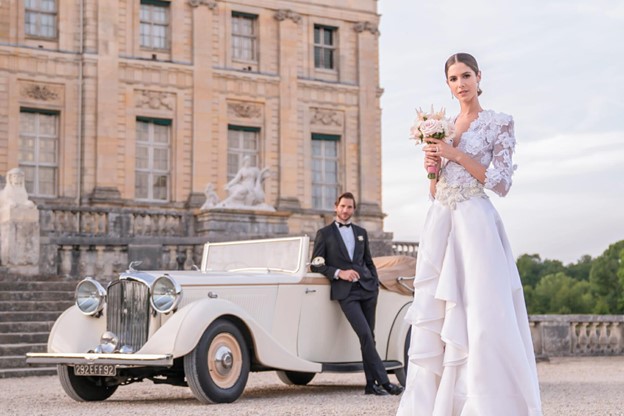
French weddings have witnessed a harmonious blend of age-old traditions and modern influences. As global trends permeate the French nuptial scene, many couples are adopting contemporary twists while still retaining the essence of ancestral customs. This seamless melding is evident in everything from the choice of venue to the attire and ceremonial practices. Digital innovations, too, play a role; for instance, the time-honored practice of handwritten invitations now occasionally gives way to eco-friendly digital versions or uniquely designed e-invites. Similarly, while the classic French château remains a coveted wedding venue, modern urban spaces, art galleries, and even industrial lofts are rising in popularity for avant-garde ceremonies. The evolution of French weddings is a testament to the dynamic nature of culture, showcasing how traditions can be both preserved and adapted to reflect contemporary tastes and influences.
The rich tapestry of French wedding traditions, with its deep historical roots and symbolic rituals, has always encapsulated the essence of love, unity, and community. In today’s era, as modern adaptations interweave with these age-old customs, we witness a beautiful amalgamation that respects the past while resonating with contemporary sensibilities. This blending of traditions showcases the enduring nature of cultural practices and their ability to evolve and remain relevant. As French weddings today gracefully integrate modern elements, they not only pay homage to a storied past but also celebrate the dynamic and progressive spirit of present-day love stories. In essence, the French wedding tradition, through its modern adaptations, reaffirms that while the essence of love remains unchanged, its expressions can beautifully evolve with time.
Traditional French Wedding in Paris

In the heart of France lies its iconic capital, Paris, often dubbed the “City of Love.” Here, amidst the backdrop of historic cathedrals, charming boulevards, and the enchanting Seine River, French traditional weddings take on a particularly romantic allure.
A Parisian wedding often commences at one of the city’s grand churches, like Notre-Dame or Sacré-Cœur. The ancient stones and stained glass windows offer a serene ambiance, making the matrimonial vows even more profound. Tradition dictates that the bride often arrives in a vintage car, her path sprinkled with flower petals by young flower girls, reminiscent of times when brides would walk through the village to the church.
After the solemn church ceremony, it’s a delightful tradition for the bride, groom, and their entourage to amble or embark on a picturesque boat journey down the Seine. This moment allows the couple to revel in their fresh marital bliss, with monumental edifices such as the Eiffel Tower and the Louvre serving as majestic canvases for their cherished photographs.
Receptions in Paris often lean on the country’s famed culinary heritage. Held in historic chateaus, renovated lofts, or even rooftop terraces overlooking the cityscape, guests are treated to an array of gourmet dishes, from foie gras to escargot, paired with some of the finest French wines and champagnes. The feast often reaches its zenith with the unveiling of the “Croquembouche,” a quintessential French wedding delicacy made of stacked choux pastry balls, held together by strands of golden caramel.
In essence, a traditional wedding in Paris is a harmonious blend of timeless customs and the inimitable charm of the city. It’s a celebration that is as much about honoring age-old traditions as it is about the undying allure of Paris itself.
